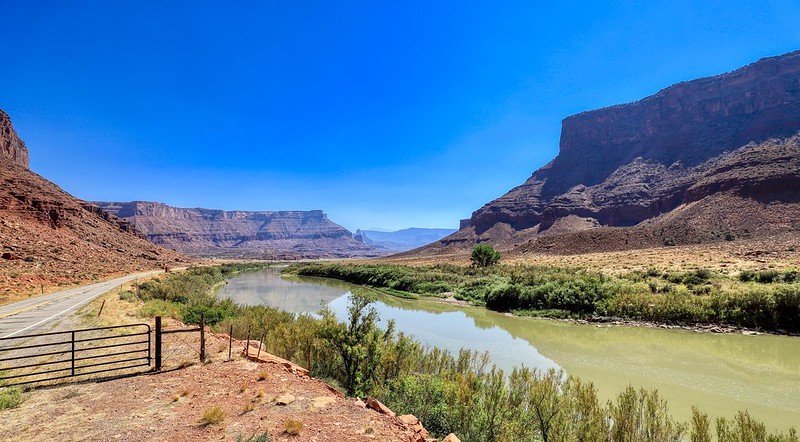Three great stories we found on the internet this week.
Water under the bridge
“Water, by its very nature, is used to extinguish fires, not to ignite them,” wrote Munther Haddadin in his book Diplomacy on the Jordan, an apt metaphor for Israeli-Jordanian diplomacy. For years, the two countries have used water exchanges made possible through joint desalination efforts to forge a stronger cross-border connection. Now, new research suggests that Mexico and the U.S. could do something similar, using desalination to reduce tensions over declining flows in the Colorado River.
The U.S. and Mexico share the river’s water supply, but today it provides less water than we can sustainably take from it — 1.2 billion cubic meters less, to be precise. The new research proposes a solution similar to what Israel and Jordan worked out: a desalination plant that would benefit both countries. The plant, which the U.S. would pay for, would be located on Mexico’s Sea of Cortez. The water it provides Mexico would allow the U.S. to take a larger amount from the Colorado River without its neighbor to the south feeling the pinch.

As climate change and development strains global water supplies, these types of water exchanges are increasingly being seen as a way to preemptively circumvent future conflicts over water. As one observer put it, binational desalination is “a bargaining chip to make people come together… Everybody needs water, everybody wants water, and it creates opportunities for people to come together and create solutions.”
Better blasting
For the world to go green, it needs rare earth elements (REEs) — metals like yttrium and neodymium that provide crucial components for wind turbines, solar panels and rechargeable batteries for electric cars. The problem is, these metals are often as hard to extract as they are to pronounce. They exist in such low concentrations that that mining them requires blasting through massive amounts of ore.
Crushed by negative news?
Sign up for the Reasons to be Cheerful newsletter.Instead of extracting REEs from the earth, what if we could extract them from stuff we’re not using anyway? A new method does just this, using heat to separate REEs from certain types of industrial waste. Take coal: after it’s been burned, the REEs it contained remain stuck in the ash, trapped in microscopic bits of glass that can be shattered with pulses of extreme heat. Once released, the REEs can then be collected and used. The technique has proven twice as efficient as other methods of extraction and uses no polluting chemicals.
One big hurdle is the high amount of heat that’s required, which makes scaling the process up tricky. But if that dilemma can be worked out, say the researchers, there is more than enough coal ash in the world to give us all the REEs we need. “We don’t need any more coal to be burned for this [recycling] process to work,” said one. “We have sufficient mountains of this forever.”
All about perspective
This month, the Baltimore Museum of Art will unveil an exhibit curated by the people who probably spend more time with the art than anyone else: the security guards.
Since last year, the guards have been working with the museum’s curatorial staff to learn how to curate an exhibition. Many chose pieces that spoke to them personally, from a sixth-century pre-Columbian sculpture to a 2021 protest painting. One who is studying to become a singer chose a Hale Woodruff oil painting after asking himself, “If these paintings could sing, what would they sound like?” All of the guards involved were paid extra for the time, and will be able to explain the reasoning behind their choices. The exhibit, titled “Guarding the Art,” opens March 27.







